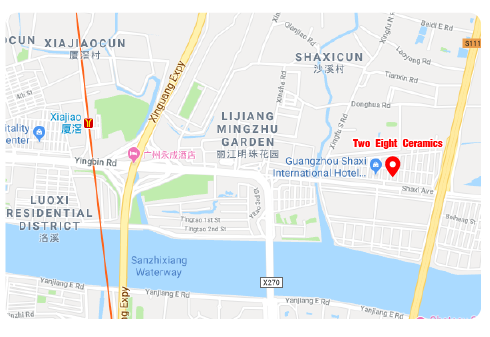The Michelin Star Indian restaurant in Macau - michelin star restaurants dishes

When the Michelin Guide Hong Kong and Macau endorsed the Golden Peacock of the Venetian Macao with a star a few months before the opening, a wave of interest was aroused.
In December 2018, chef Justin Paul and his team of 15 won Michelin stars for six consecutive years.
The Golden Peacock restaurant is an Indian restaurant that shows an innovative spirit at the table and is committed to bringing authenticity.
As chef Justin said, "Our idea is to get out of the comfort zone of the food and create something that even our most demanding and average customers really like ".
We have connected with chef Justin from Kerala on a Michelin star, his philosophy of food, international awareness of Indian food and what drives his team.
Edited the interview excerpt: when and how did you realize that the kitchen was your place?
My childhood was filled with oral history of our regional cuisine.
This, as well as the various ingredients at home, interest me in cooking.
My late father and I will be together for a few hours and I as a disciple watch him carefully cooking for family activities.
I was inspired to watch him get so happy from cooking.
These are not exotic dishes, but traditional Kerala dishes with his own changes.
He will carefully check the smell and taste of each ingredient.
I like the passion and precision in it, which is also a favorite informal way.
He did it all out of love, not anything else.
I think I was inspired.
One of my favorite dishes during that time was, of course, Kerala curry fish.
Although I live in Macau now, I still have a childhood in my mind.
It also affected my cooking.
I was inspired by traditional dishes and time
Selected recipes from those inland areas.
I try to experiment with them, but the core is the same.
That's why we have a wider range of South Indian restaurants than most Indian restaurants.
Curry Quilon fish, for example, you don't usually find it.
What does it feel like living with Michelin stars for six consecutive years?
Is this a lot of pressure for you and the team?
This is the honor of the whole team.
The idea is that all of us should get out of the comfort zone of the food and create something that even our most demanding and average customers really like.
It's pressure, but the pressure is right.
Indian chefs who display Indian food abroad tend to adopt Western methods in terms of technology, plating and descriptors.
What is your approach?
The process starts by imagining a new dish and then looking at the techniques that organically fit it.
Some of our dishes have Western ingredients in Indian technology and vice versa.
Electroplating is an art that we attach great importance.
Even before social media asked for an installable plate, we were imaginative about plating.
There is only one goal in the preparation of descriptors: while making diners curious, they should be easy to understand.
We also have a government rule that the name of the dish should be their native language.
This makes cooking more convenient.
How do you ensure that your food remains representative of India?
I don't think any country can match the culinary diversity of India.
Authenticity is a subjective experience.
I believe, find the highest common denominator of food in any region and imagine it to a whole new level.
Food continues to grow. It has to.
Therefore, we strive to create something new from the ingredients we are familiar.
For example, namgen is a celebration of common vegetables found in South India, but has tried it in a new incarnation.
We also try to find out how global cuisine works with Indian ingredients;
Treasure Oceana is where we eat European Seafood, prepared with Indian ingredients in Indian way.
Indian cuisine is very flexible in terms of ingredients.
I like to call this handmade Indian food.
As far as Indian food is concerned, what international trends do you think will occur in 2019?
I think there is a growing interest in vegetarian food in India.
In 2018, we focused on vegetarian dishes with Indian background.
We took ingredients or dishes easily found by Indian families and gave them an unexpected leap.
One of my favorite products at the moment is khumb bajre ka soweta, an ordinary North Indian vegetable stew made of organic millet and portobello mushrooms.
Another is chicken leg essence or muringakka rasam: it is made from one of the most common vegetables in the backyard of South India.
This is an authentic Kerala soup with muringakka (drumsticks)
Asafida and vegan almond cream.
There is also "anjeer and khajoor", a favorite dessert in the eastern part of the country, such as Bangladesh.
There are honey dates, dried fruit without flowers, pistachio rolls, gold honey.
What do you like to do outside the kitchen?
I think, like everyone else, I like to be with my family.
I like to cook with two little girls.
Macau and Hong Kong are so beautiful and have a long history that we often visit the city.
I am also a football fan.
But I don't remember the last time I had time to watch a full game.
Guangdong Hosen Two Eight Industrial Co.,Ltd. is a professional ceramic tableware manufacturer. It is committed to provide customers with one-stop purchasing service for hotel supplies and catering suppliers about 20 years by now. Sitemap
CONTACT US
Mobile: +86-18127955755 / 13694279549
E-mail: haoxin-2@28ceramics.com /
Office Address: 3/F-4/F, Shaxi International Hotel Supplies City, Shaxi Village, Guangzhou City, China
Factory Address: Ditou lndustrial Zone, Fengxi District, Chaozhou City, China

